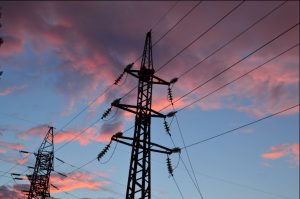 In October 2012, Superstorm Sandy wreaked havoc on the northeastern United States. Today, more than five years later, we are only just beginning to see the benefits of long-term recovery efforts coming to fruition, as states and utilities invest in smarter, more resilient grid technologies. It has taken time but a number of states, including my home state of New York, are deploying microgrids and storage resources, and valuing localized generation appropriately while also hardening traditional transmission and distribution infrastructure.
In October 2012, Superstorm Sandy wreaked havoc on the northeastern United States. Today, more than five years later, we are only just beginning to see the benefits of long-term recovery efforts coming to fruition, as states and utilities invest in smarter, more resilient grid technologies. It has taken time but a number of states, including my home state of New York, are deploying microgrids and storage resources, and valuing localized generation appropriately while also hardening traditional transmission and distribution infrastructure.
These investments will help the grid withstand and recover from future catastrophe, whether a natural disaster, cyber attack, or act of terrorism. Many such events are inevitable, but smart improvements now can ensure critical infrastructure is protected and full power restoration can occur quickly when the next disaster hits.
The recovery from Sandy has been a long, difficult road, but it has taught us many lessons on how to design, construct, and operate a more resilient grid. Many of those lessons must now be passed on to Puerto Rico.
To mitigate risk from future storms, and protect taxpayers’ investments in rebuilding the system, Puerto Rico’s grid must be rebuilt to be more resilient, advanced, and less dependent on fossil fuel imports. We have already seen efforts to incorporate new distributed energy resources, which can complement relocating and elevating substations, installing flood walls, and other infrastructure hardening investments.
While work is being done by New York and Puerto Rico’s governments, the Federal government is missing an opportunity to promote grid resilience. Instead, the Grid Resiliency Pricing Rule, proposed by Energy Secretary Rick Perry and recently rejected by the Federal Energy Regulatory Commission, would have required subsidizing power generators for having 90 days of fuel on-site, which would add little, if any, resiliency to our system.
This proposal missed the mark for several reasons. No evidence points to fuel assurance being the most significant factor in promoting resiliency. According to the Department of Energy’s second Quadrennial Energy Review, distribution systems are responsible for over 90 percent of total electric power interruptions. Similarly, analysis by the Rhodium Group found fuel emergencies or deficiencies at power plants resulted in 0.00007% of total customer hours of lost service. The proposed resiliency benefit is clearly not worth the significant estimated costs to ratepayers. That money would be better spent hardening infrastructure and making other modernization investments.
If Superstorm Sandy and Hurricane Maria have taught us anything about our electricity system, it is that a flexible grid, supported by distributed resources and other advanced technologies, is critical to improving resiliency. While I believe Secretary Perry’s proposal was the wrong approach, policymakers should consider how to enhance our grid’s resiliency. The Federal government should learn from the experiences of Superstorm Sandy and promote greater resiliency in the Puerto Rican recovery efforts, as well as throughout the country.
With the right vision and leadership, we can invest in a smarter, flexible grid that moves us towards a more resilient system.
Let’s take this opportunity to demonstrate an Island system based on renewable energy and resiliency. Making Puerto Rico a center for the development of fossil-free resilient energy for the US… Read more »
Fossil fuel-based power generation creates the conditions (extreme weather, wildfires, floods, droughts) that destabilizes the grid, so it is an inherently unreliable and non-resilient form of energy. Of course, fossil… Read more »
Representative Tonko is right-on-the-mark. The PR/NY plan assumes you can move fuels onto the island and throughout the islands during megastorms. That approach failed in Hurricane Katrina, Typhoon Haiyan, Hurricane… Read more »
Clearly a hurricane pathway like Puerto Rico with no access to local fossil fuels and no pipeline access to natural gas ought to be moving off of conventional, fossil-fired wire-and-pole… Read more »
It makes no sense for us to financially support the rebuilding of the outdated PR electricity grid, a grid structure unsuited to the environment of PR. That choice to toss… Read more »
Instead of starting with a solution that would make PR a laboratory for wind and solar, the island’s long term interests would be better served by two initial steps. First,… Read more »
A most important statement in Congressman Tonko’s presentation was the observation that over 90% of the grid disruptions are due to the distribution systems. Long term electricity sources, if proven… Read more »
Changes toward more robust, renewable, and efficient processes of connecting end-users with energy services through efforts at having a smart grid is making the inadequacy of the traditional energy grid… Read more »
Having just returned from Puerto Rico, I would like to contribute to this discussion. What is missing is the appreciation and understanding that the entire grid was destroyed by the… Read more »
Dr. Kadak’s summary from his trip to Puerto Rico has been added to the OEP Resource Library and may be found here.
When viewed apart from climate change, replacing a ravaged fossil fuel-powered grid with a stronger fossil fuel-powered grid might make sense. But considering that we need to bring greenhouse gas… Read more »